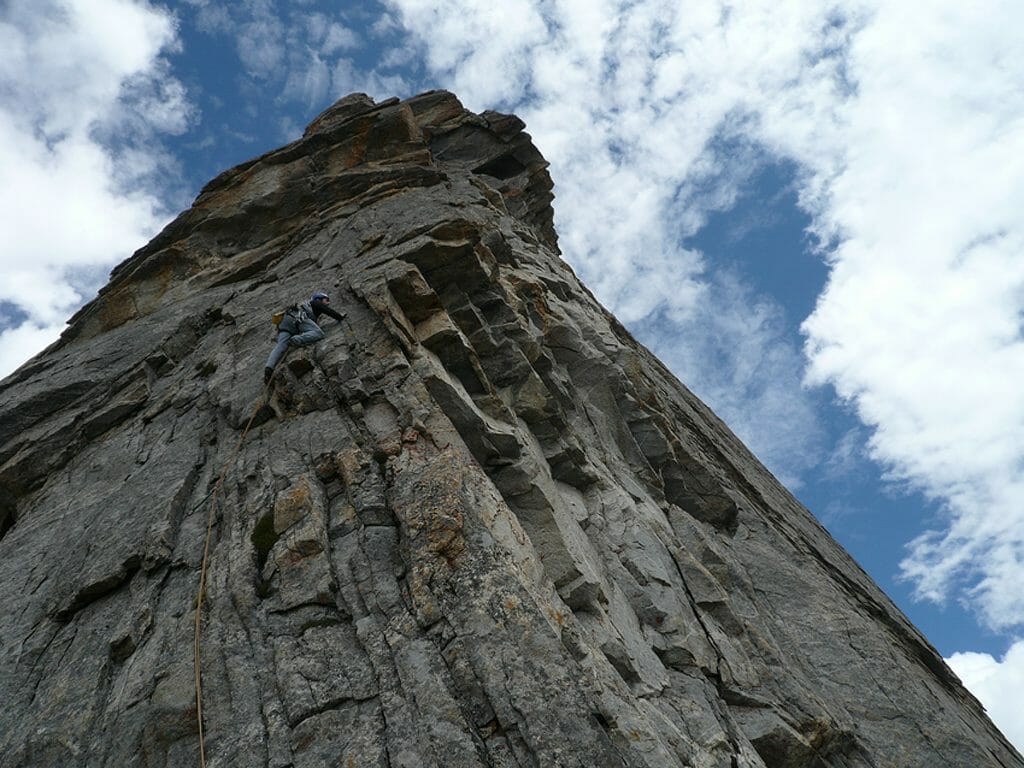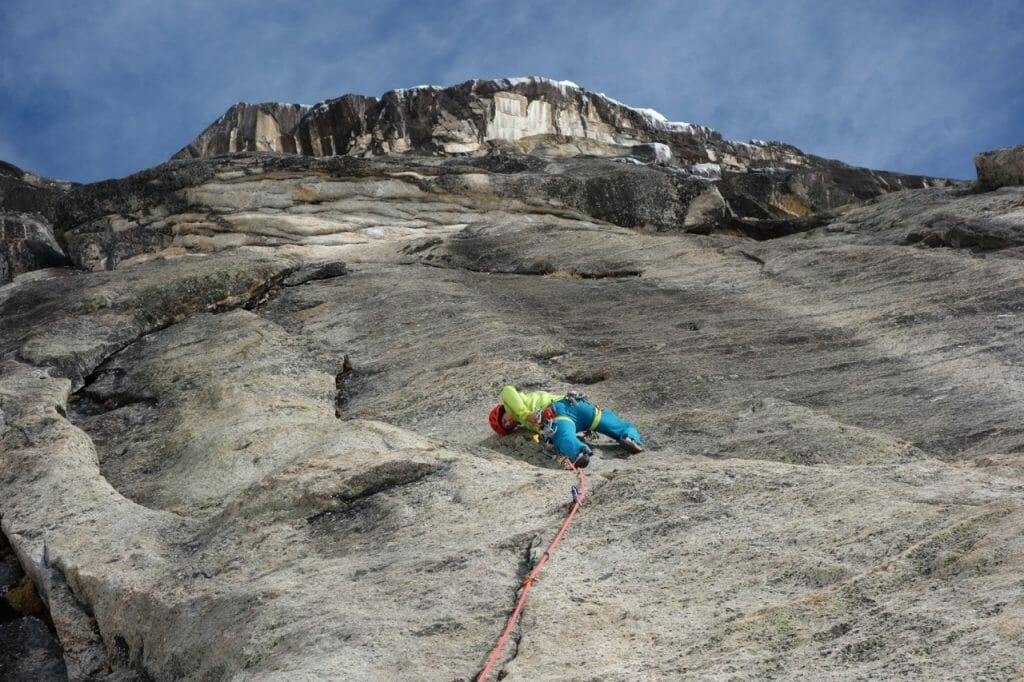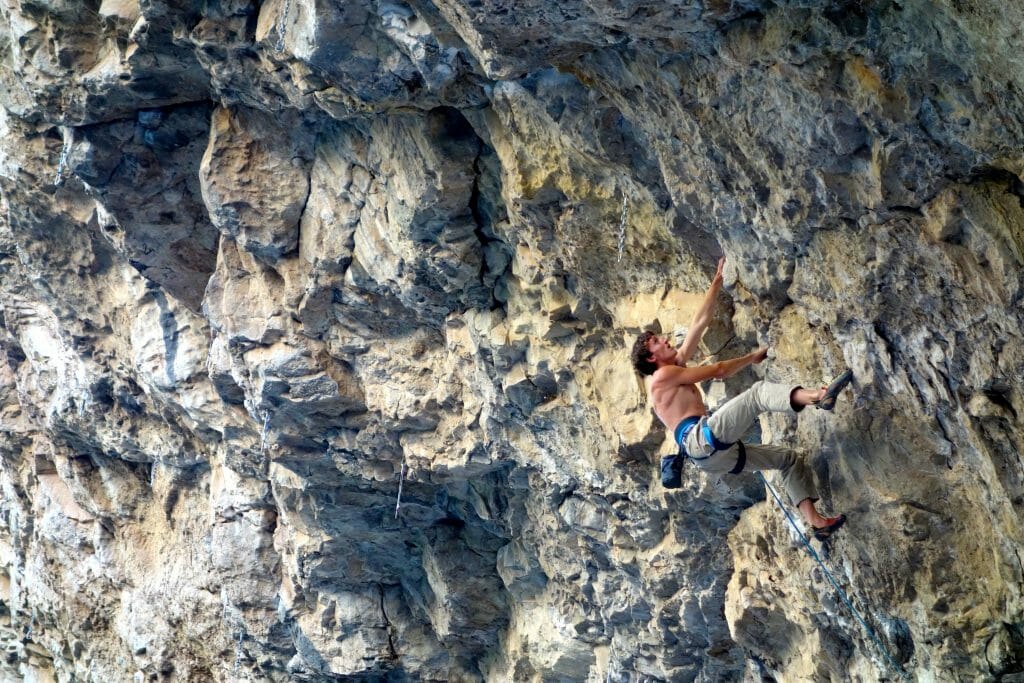Lots of climbers who want to improve tend to say, “I’m gonna go to the climbing gym two times a week for the next six months.” That’s a pretty good idea. It’s certainly not a bad idea. If nothing else it will be fun.
That said, simply climbing in an uncontrolled and unmeasured way, without a specific training strategy, will not typically yield great results or improvement. If progress is your goal, then you need to be intentional about how you train, and you also need to be careful not to mix up, or condense, skill and strength training into a single workout. For more about strength training for rock climbing read “Skill vs. Strength in Rock Climbing.”
In this article I want to focus on skills. When it comes to any type of training, the first step is to figure out what’s holding you back. In terms of skills, it may be your footwork, your dynamic movement, your core strength/tension, or specific movements you have not perfected—toe-hooking, for example. The training regimen for any of these impediments will be focused differently, but the common thread is that they must be measured, monitored, and progressively challenged.
Let’s consider the following example: a 5.9 rock climber who has never trained for rock climbing but has been climbing for two years and really wants to ramp up their climbing until they can lead 5.11. It’s the end of fall, and this person is looking ahead toward next summer as they start to think about this. What should this person do?
The good news for this person is that probably the most important thing to do is, simply, to rock climb! Climbing skills can certainly be learned and studied, and there’s a couple things we can do to simulate various movements. But the most important thing would be to just go climbing. What kind of climbing, though, is going to be fairly important. If you go to the bouldering gym, and do lots of really overhanging problems on big holds, that won’t do much to address a technique issue for slabs. There’s obviously a tremendous difference between a crimpy Red Rock 5.10+ like Fiddler on the Roof and a sustained hand crack like the 5.10+ Serenity and Sons in Yosemite. So it’s important to be specific about the type of climbing you are training for, and then train skills on those kinds of routes.

When you do go to the gym or crag, choose your routes carefully. Remember, the goal is not to just send the next number grade. The goal is to train specific skills. Don’t simply find a 5.11 with a quick but painful crux (unless pain tolerance is the specific skill you’re trying to train). Find a route with some more technique required, so you’re actually learning about movement. And don’t forget about bouldering! I’ll admit it, I’m not as excited about bouldering as I am about leading trad climbs, for example. But bouldering is still really helpful, and I can’t recommend it enough. Just be careful you are not trying problems that you can’t do due to a physical limitation. If you’re trying to go from 5.9 to 5.11, I wouldn’t recommend doing boulder problems where the limitation is your strength or power. While those qualities do need to be trained, keep in mind that this isn’t your strength training session. Find a nice slabby V2 with balancy moves, tough footwork, and a complex sequence. Do a series of 5–10 V1s and V2s that challenge your route-reading. The idea is to find routes that test your technique, not your strength.
Another thing you can do is … don’t laugh … watch some climbing films. The power of visualization shouldn’t be underestimated. This is something that people do regularly in other sports, and it really does help. Watch them over and over with your friends of similar abilities, try to understand the movements people are doing, and talk about how the climbers move. By discussing and vocalizing the reasons they might flag a leg, turn a shoulder, or hook a heel, you’ll begin to conceptually understand the movements better, and that will translate to on-the-rock performance.
Another powerful tool is one you may be looking at right now. A smartphone is a great way to record yourself and your friends, and maybe some climbers more advanced than you are, doing the same route or boulder problem. Watch the videos and compare how people move; this can be incredibly informative.
How should your climbing training time be divided between skills training and strength training? Most people would be well served to do two days a week of strength training, and then two or three days a week of technique training. Now, that sounds like a tall order, I know. But the good news is, as far as the technique training goes, we can just call that climbing! That can be indoors, or outdoors, at home or on a climbing trip, it doesn’t matter. What does matter is just to get really intentional with this. Whether in the gym or outside, on these skill development days don’t do routes that elicit a lot of muscular fatigue. Aim for routes that are technique challenging, and not muscularly challenging. So we’re separating the skills from the strength training, which will allow us to do each type of training better.

The amount of rest needed between skill training sessions will depend largely on how fit you already are and what you can do for skills training. In short, advanced climbers who will be doing hard enough climbing to be creating heavy loads on joints and connective tissues will need more time between sessions, 48–72 hours. Climbers starting out will be able to space skills more tightly; 24–48 hours might be sufficient.
And don’t forget, you’ll want to be planning skills training around two strength training sessions per week. If you are doing both forms of training, I like to put my skills days right before my strength training days because the skills days are not entirely without muscular effort, and so it’s nice to do them when you’re fresh. So, for an example: Saturday skills, Sunday strength; Wednesday skills, Thursday strength. (This follows the popular two on/two off dictum, but separates skill/strength days.) You can cut it up however you like, that’s just one example that might work for you. If I wanted to have three skills sessions per week, I’d add a skills day to Tuesday in this example and keep my rest days as Monday and Friday.
Read more: How to Train for Rock Climbing

_
Become an #uphillathlete with Josh Wharton’s 4 week Beginner to Intermediate Rock Climbing Training Plan.

